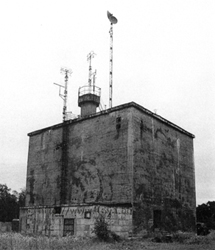 Although the history and modus operandi of the Western Military Liaison Missions to the Soviet High Command in Germany are now relatively well known and documented, there are still some grey areas.
Didn't the "spies in uniform" also practice espionage as we imagine it in novels? A little bit anyway, it seems.
If former military personnel keep quiet, in the past (or still?) out of obligation or because of the culture of secrecy in which they were immersed for years, some unusual information sometimes emerges discreetly without making waves.
We will not speculate in vain, but we will cite for example the testimony of this young conscript of the FMLM where it is a question - without naming him - of what is called in the world of espionage a dead letter box or a dead drop ("La guerre froide vécue par un jeune appelé" > Link - at the end of the article). The realistic novel "Pendulum" (1) which depicts the USMLM is not left out on this aspect of things.
The aeronautical side of intelligence also has its grey areas. New information on the role played by the Chipmunks during observation flights over the BCZ was revealed for the first time in the book by Kevin Wright (2) and Peter Jefferies entitled "Looking Down the Corridors" (see Multimedia > Link).
A testimony tells us that the Chipmunks sometimes carried out different missions such as flying over the Werneuchen airbase with a sealed box and a sensor on board, therefore probably an antenna.
What was so special about Werneuchen? Perhaps the forest of communication antennas mounted above a former Luftwaffe bunker apparently nicknamed "Göring's Tower" (bachnya Geringa) by the Soviets raised questions. This building was built during the war by the Reich Labor Service (Reichsarbeitsdienst) and Soviet prisoners and was later used as a Luftwaffe test site (Erprobungsstelle) from April 1943. Some buildings related to the tests carried out in Werneuchen were erected in the surrounding area, such as a tower in Weesow (> Link) on top of which a land-based version of the FuG 200 radar was tested. It should be noted incidentally that it is likely that the station for receiving data transmitted by telemetry from the MiG-25RBK and then RBF on reconnaissance missions was housed there.
Although the history and modus operandi of the Western Military Liaison Missions to the Soviet High Command in Germany are now relatively well known and documented, there are still some grey areas.
Didn't the "spies in uniform" also practice espionage as we imagine it in novels? A little bit anyway, it seems.
If former military personnel keep quiet, in the past (or still?) out of obligation or because of the culture of secrecy in which they were immersed for years, some unusual information sometimes emerges discreetly without making waves.
We will not speculate in vain, but we will cite for example the testimony of this young conscript of the FMLM where it is a question - without naming him - of what is called in the world of espionage a dead letter box or a dead drop ("La guerre froide vécue par un jeune appelé" > Link - at the end of the article). The realistic novel "Pendulum" (1) which depicts the USMLM is not left out on this aspect of things.
The aeronautical side of intelligence also has its grey areas. New information on the role played by the Chipmunks during observation flights over the BCZ was revealed for the first time in the book by Kevin Wright (2) and Peter Jefferies entitled "Looking Down the Corridors" (see Multimedia > Link).
A testimony tells us that the Chipmunks sometimes carried out different missions such as flying over the Werneuchen airbase with a sealed box and a sensor on board, therefore probably an antenna.
What was so special about Werneuchen? Perhaps the forest of communication antennas mounted above a former Luftwaffe bunker apparently nicknamed "Göring's Tower" (bachnya Geringa) by the Soviets raised questions. This building was built during the war by the Reich Labor Service (Reichsarbeitsdienst) and Soviet prisoners and was later used as a Luftwaffe test site (Erprobungsstelle) from April 1943. Some buildings related to the tests carried out in Werneuchen were erected in the surrounding area, such as a tower in Weesow (> Link) on top of which a land-based version of the FuG 200 radar was tested. It should be noted incidentally that it is likely that the station for receiving data transmitted by telemetry from the MiG-25RBK and then RBF on reconnaissance missions was housed there.
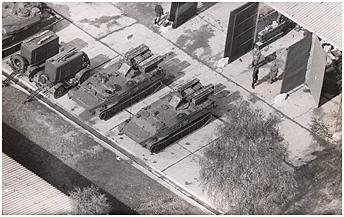
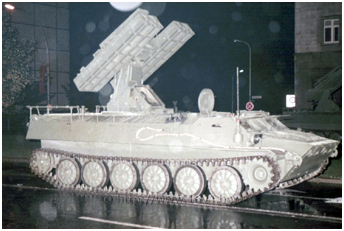 Documents declassified by the British National Archives now provide us with more information on the role of the Chipmunks in unconventional missions. Information about them was published in the August 2024 issue of the magazine "Aeroplane" and the following summarises the elements new for this site. Thus, in 1981 and until the end of 1982, the Chipmunks participated in the collection of electronic information targeting a new Soviet ground radar of an undisclosed type. The appearance of the short-range surface-to-air system Strela-10 (SA-13 "Gopher") in the GDR was the subject of new missions intended to collect data on its radar of course in order to be able to identify and counter it. The missions targeting the SA-13 were approved by the Foreign Office in October 1985. These were codenamed "Venton" and were carried out within the framework of the regular approved missions, then called "Oberon". In addition to his usual cameras, the observer had a portable receiver and a magnetic recorder to record the signals received. If they were picked up, the aircraft immediately returned to Gatow.
Documents declassified by the British National Archives now provide us with more information on the role of the Chipmunks in unconventional missions. Information about them was published in the August 2024 issue of the magazine "Aeroplane" and the following summarises the elements new for this site. Thus, in 1981 and until the end of 1982, the Chipmunks participated in the collection of electronic information targeting a new Soviet ground radar of an undisclosed type. The appearance of the short-range surface-to-air system Strela-10 (SA-13 "Gopher") in the GDR was the subject of new missions intended to collect data on its radar of course in order to be able to identify and counter it. The missions targeting the SA-13 were approved by the Foreign Office in October 1985. These were codenamed "Venton" and were carried out within the framework of the regular approved missions, then called "Oberon". In addition to his usual cameras, the observer had a portable receiver and a magnetic recorder to record the signals received. If they were picked up, the aircraft immediately returned to Gatow.
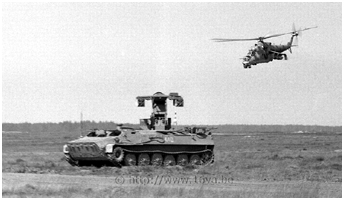
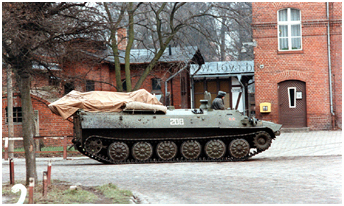 The radar of the SAM system in question was the 9S86 "Snap Shot" (at least on the original system) which was purely a range radar used to prevent the launch of the IR-guided 9M37 missiles before the target was within effective range. The optical sight 9Sh127 mounted to the right of the turret was used for the direct engagement of targets.
Below the radar, mounted between the missile ramps and behind a glass, was an electro-optical sensor providing assistance for tracking and semi-automatic engagement. The Strela-10 designated 9K35 by the Main Rocket and Artillery Directorate (GRAU), was mounted on an MT-LB tracked chassis which existed in two versions. The 9A34 vehicle was the vehicle described above, called SA-13A TELAR 2 (Transporter-Erector-Launcher) in the West. The 9A35 model was distinguished from the previous one by the presence of a 9S16 "Flat Box" radio direction finder system which was recognizable by its rectangular antennas mounted at the front in the center and on the turret and took the NATO designation of SA-13A TELAR 1 - compare the photo of the two vehicles side by side illustrating this article. The 9K35 complex was improved over the different versions. The systems targeted by the Chipmunk crews were probably of the 9K35M model. The result of the Chipmunk's electronic reconnaissance missions remains unknown to this day.
The radar of the SAM system in question was the 9S86 "Snap Shot" (at least on the original system) which was purely a range radar used to prevent the launch of the IR-guided 9M37 missiles before the target was within effective range. The optical sight 9Sh127 mounted to the right of the turret was used for the direct engagement of targets.
Below the radar, mounted between the missile ramps and behind a glass, was an electro-optical sensor providing assistance for tracking and semi-automatic engagement. The Strela-10 designated 9K35 by the Main Rocket and Artillery Directorate (GRAU), was mounted on an MT-LB tracked chassis which existed in two versions. The 9A34 vehicle was the vehicle described above, called SA-13A TELAR 2 (Transporter-Erector-Launcher) in the West. The 9A35 model was distinguished from the previous one by the presence of a 9S16 "Flat Box" radio direction finder system which was recognizable by its rectangular antennas mounted at the front in the center and on the turret and took the NATO designation of SA-13A TELAR 1 - compare the photo of the two vehicles side by side illustrating this article. The 9K35 complex was improved over the different versions. The systems targeted by the Chipmunk crews were probably of the 9K35M model. The result of the Chipmunk's electronic reconnaissance missions remains unknown to this day.
notes
(1)
"Pendulum" by Randal R. Jones, Dog Ear Publishing, 2008, 2013 update.
(2)
Kevin Wright is the author of the article "The Hunting Pembrokes" on this site > Link .
 |
Plan du site - Sitemap |  |
